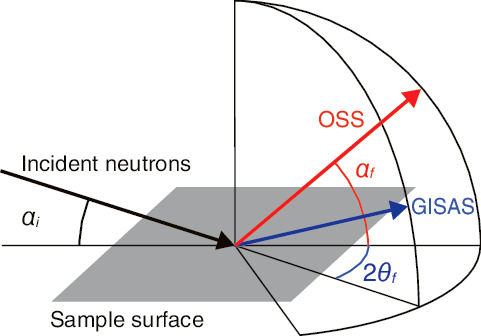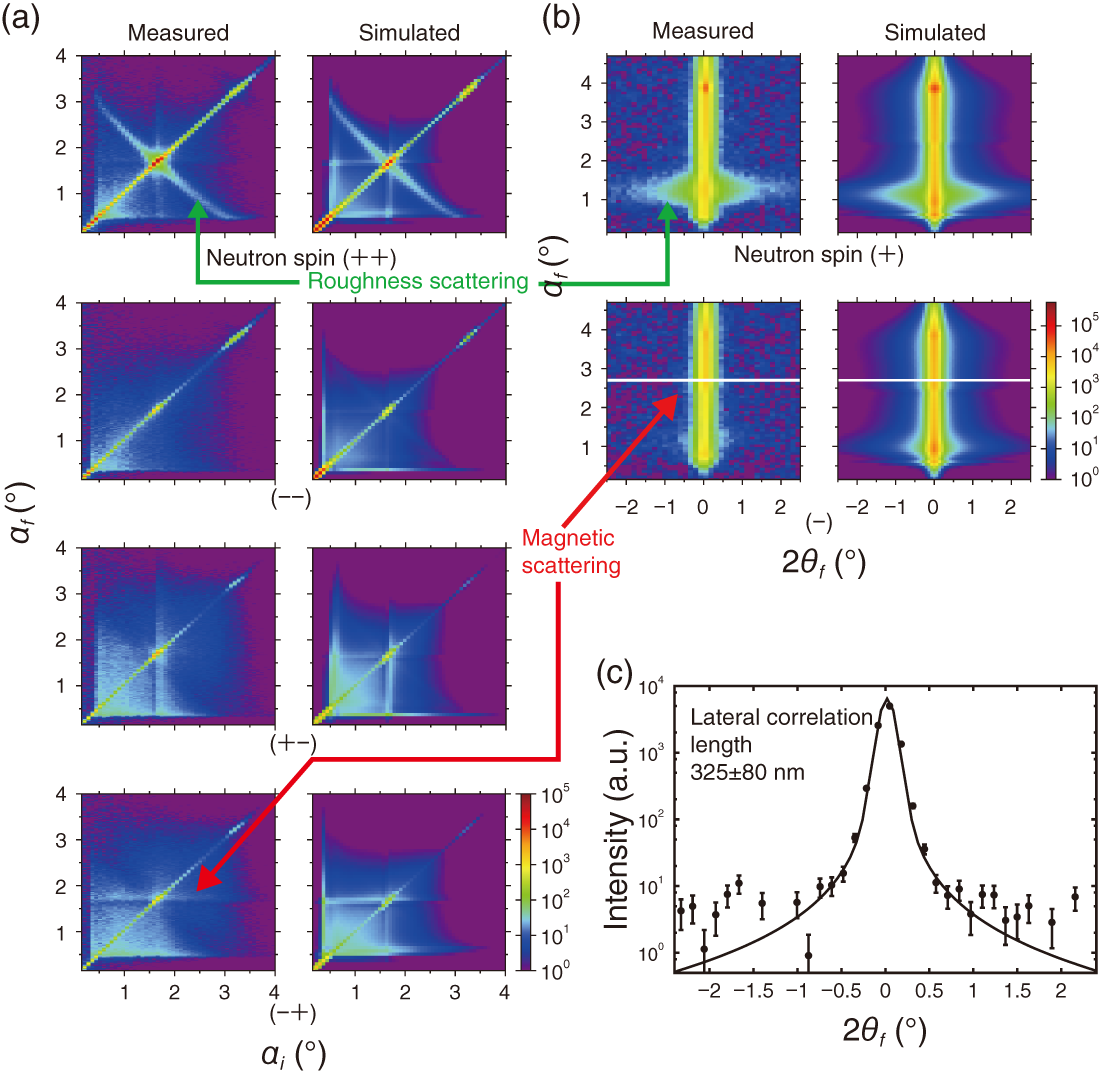
Fig.5-6 Scattering geometry of polarized neutron off-specular scattering (OSS) and grazing-incidence small-angle scattering (GISAS) measurements

Fig.5-7 Polarized neutron scattering images of the Fe/Si multilayer of 30 bilayers with a thickness of 10 nm
Layered magnetic structures exhibit interesting and important magnetic properties such as exchange coupling between layers, giant magnetoresistance, and tunnel magnetoresistance, none of which are present in the bulk. These anomalous magnetic properties basically arise from the size of the structure in the out-of-plane and/or in-plane directions reduced to the nm range. It is not possible to obtain information on the size of the structure and orientation of spins in magnetic multilayers through direct observation of the surface, although it is important to elucidate the mechanism and to offer the possibility of new applications.
Polarized neutron scattering under a grazing-incidence geometry (Fig.5-6) is a unique and non-destructive technique for observing the correlations of small magnetic objects in a layered system. It is expected to clarify the mechanism behind the magnetic properties mentioned above. In order to demonstrate this, polarized neutron off-specular scattering (OSS) and grazing-incidence small-angle scattering (GISAS) measurements were performed for the Fe/Si multilayers used for the spin-polarization of a neutron beam. The measurement was performed on the D17 polarized neutron reflectometer and the D33 small-angle diffractometer at the high-flux reactor in the Institut Laue Langevin. Soft magnetic properties play a critical role in determining the performance of the neutron polarizing multilayers as they need to display high polarization efficiencies under low external magnetic fields to meet a variety of research demands. The magnetic layers fabricated using the sputtering technique are nanocrystalline with a size less than the ferromagnetic exchange length (≈20 nm) where the exchange interaction between neighboring spins becomes dominant over the local anisotropies of randomly oriented grains. Hence, it should be possible to explain its magnetic behavior, which differs from that of the bulk, using the random anisotropy model.
The OSS and GISAS data, shown in Figs.5-7(a) and 5-7(b), provide complementary information on the lengths of areas where the spins are aligned to the same direction, since the accessible length scales of the in-plane structures differ between them. The measured data were analyzed by the simulation according to the framework of the distorted wave Born approximation (DWBA), where the scattering due to the in-plane magnetic structure is assumed to be a small perturbation of the reflection and refraction occurring at the multilayer interfaces. Analysis with the DWBA reasonably explains the measured data. The obtained lateral correlation lengths corresponding to half the length of the area with a uniform orientation of the spins were determined by comparison of the measured profile with the simulated one (Fig.5-7(c)).
This study demonstrated that complementary measurements with the OSS and GISAS are suitable for investigating the in-plane structure of layered systems with a length scale ranging from nm to μm. The obtained lateral correlation length was much larger than the in-plane grain size. This shows that the exchange interaction gives rise to the formation of areas comprising a large number of grains, where the spins are aligned to the same direction. Hence, the obtained result is in good agreement with the random anisotropy model. This model predicts that reduction in grain size and uniform uniaxial anisotropy will result in soft magnetic properties. This allows the possibility of further improvement to the Fe/Si multilayer as a neutron polarization device. Polarized neutron scattering under a grazing-incidence geometry is expected to be a powerful tool not only for basic research related to the unique magnetic properties of layered systems, but also for industrial developments such as magnetic data-storage devices of which the areal density is becoming ever higher.